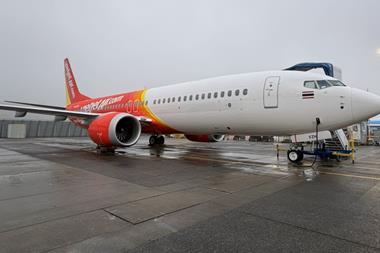Ontario Teachers is investing in the creation of smaller telecommunications satellites. Razak Musah Baba asks whether technological innovation means infrastructure investors must look beyond ‘grounded’ assets to things like fleet vehicles
There is no doubt that, as institutional investors continue to diversify their infrastructure portfolios, the asset class will keep broadening to include new sub-classes. Typical infrastructure assets like utility grids and bridges have one thing in common – they are static and fixed to the ground.
Some newer forms of infrastructure – for example, data storage, fibre optics and telecommunication towers – also share this defining characteristic. But other forms of telecoms infrastructure – namely satellites – patently do not.
The traditionally large and expensive satellites could even become a thing of the past as projects like Starlink by SpaceX seek to lower their cost and size and launch thousands of smaller satellites. If successful, would these smaller orbiting devices be classed as infrastructure?
On Thursday, Ontario Teachers’ Pension Plan announced an investment in SpaceX to help establish the Starlink network. The C$191bn (€126bn) Canadian pension fund is making the investment through its Teachers’ Innovation Platform.
Gradually, aircraft, ships and railway rolling stock, have crept into the infrastructure asset class, and even as investors make the cases for and against its inclusion, another sub-asset class could rear its head before a consensus is reached.
At the annual EDHECinfra Days Conference in London, Frédéric Blanc-Brude, director of EDHECinfra, suggested that rolling stock should be excluded from benchmarking classifications along with aircraft and ships, on the basis that infrastructure is assumed to “bolted to the ground”.
But while that debate continues – The Infrastructure Company Classification Standard (TICCS) is still open to consultation – investors need to think about what including moveable assets would mean for investment in the asset class in future. It could mean a more diversified asset class that includes cycles, drones and scooters if demographics change drastically.
One that could be next on the list as a potential infrastructure asset is fleet vehicles or ‘wheels’. Adding wheels to an infrastructure portfolio could be a natural progression. Governments are finding ways to reduce carbon emissions in cars and the UK, for instance, plans to ban the sale of new petrol and diesel cars by 2040 to make way for electric cars.
Technological advancement has helped improved batteries, sensors and artificial intelligence; demographic changes have led to a shared-economy culture of ride-hailing, co-living and co-working, and same-day delivery.
Institutional investment in airports and railways has led to investment in aircraft and trains, and, as reported last year, investors should perhaps consider moveable ships rather than immovable ports.
Infrastructure investors are already adding electric-vehicle charging points to their infrastructure portfolios. Should they also be looking to add the actual vehicles?
Investors could tap into ongoing consumer changes by providing the infrastructure in the form of fleet vehicles, partnering with – or rivalling – the likes of Uber and Amazon to provide fleets needed for ride-hailing or for deliveries.
Why now? Pricing and scale. Vehicles as a form of infrastructure will be considerably cheaper and large institutional investors would need to own tens of thousands to make a meaningful allocation.
But there has never been the need to own such large numbers of vehicles until now that on-demand taxiing, carpooling and sharing and other flexible means of car travel are gaining traction – services that make personal vehicle ownership less justifiable.
Due to advanced GPS tracking and remote immobilisation of vehicles, car rentals have also become cheaper and safer. Features like unlocking rental cars with an app have also made the rental experience convenient and less cumbersome, thus gradually shifting people away from owning vehicles. Institutions could tap into the sector by providing the vehicles needed for the growing demand for these services.
The case for adding wheels to infrastructure portfolios is unlikely to be debated in isolation, but it will be made all the more easier if consensus is reached on rolling stock, aircraft and ships.












